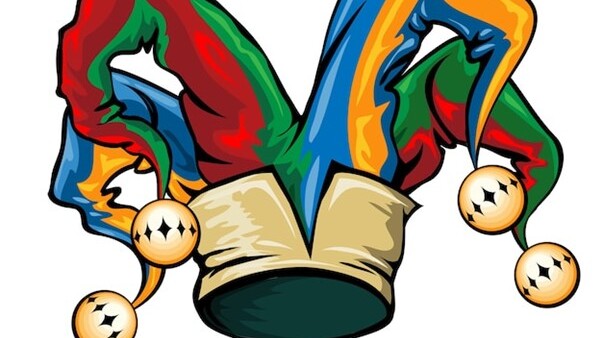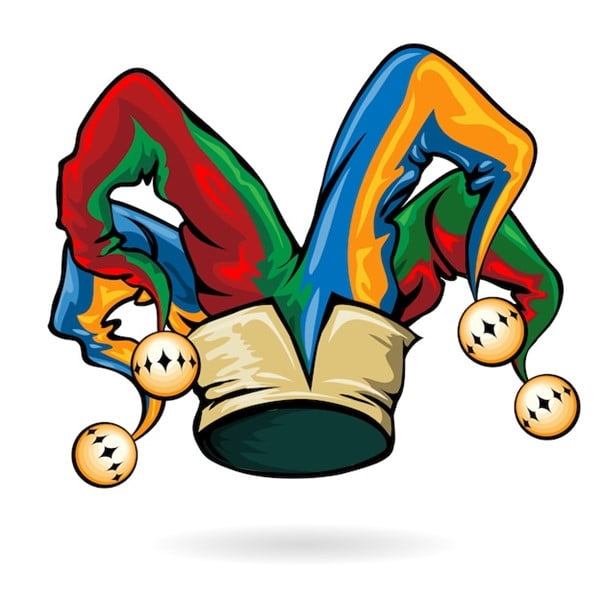
We’re pretty lucky at SSPC to have an amazing client base, but in this article I’m going to tell you about one of the greatest fools to step foot inside our clinic for years! This fool took up a new exercise regime. This fool went too hard, too soon. This fool absolutely should (and does) know better. This fool got injured. This fool … is me!

There’s been a bit of a challenge thrown around the clinic, involving participation in this years Melbourne Marathon. What started as a half marathon (21km) challenge, has morphed into a marathon challenge for one (Tim), 10km for others, but a few of us still thinking the 21km option might be feasible.
Some injuries are pure bad luck, some are absolutely unpreventable, but the majority we see are often very preventable had a little bit more common sense, or knowledge, been applied. The problem here lies in the fact that knowledge and common sense aren’t relevant unless you apply them to the situation – and for many physio’s once we hop on the bike we’re a cyclist; when we jump in the pool we’re a swimmer; when we hit the trails we’re a runner. And it’s not just physio’s that suffer this fate – we treat many extremely knowledgeable and very sensible athletes, and they also can make the mistake of pulling on their speedos, hopping on the bike, or lacing up their runners, pressing “Go” on their smart gadget, and then pushing themselves to a limit that makes you proud to read back on the resultant data when you press “Stop” at the completion of the session.
Here’s a breakdown of the many foolish decisions and situations I created.
Foolish Decision No.1: thinking after 25 years of not running that this was a good idea! “Team morale” was how I justified it.
Foolish Decision No.2: Not having a specific plan and not seeking the advice of experts around me. Isn’t that ridiculous, especially with the amount of expertise at my disposal. For goodness sake the bloke that sits in the same office as me used to run for Australia, and designs running programs daily for our clients. I didn’t even need to get out of my chair to get a program designed for me. Maybe it was pride? Maybe it was embarrassment at the level I’d have to start? Maybe I just thought I had the knowledge and common sense? So I just thought I’d pick the nice round figure of 5km and see if I could run it without stopping – first run for over 20 years remember!
Foolish Decision No. 3: Getting caught up in the technology excitement. Gee, how many times have I written about this trap? The data is everywhere – on our wrists, in our pockets, strapped to our bike. Even the most novice of athletes like me only has to do a quick google search, download an app, and there’s as much data as I could ever want (much more than I need) at my fingertip. No matter how much you try, it’s impossible not to get drawn to the data, to analyse it, to check your splits and your pace and your distance and your maximum HR and your calories burned…the list goes on… and immediately start planning to go better next time. Whatever happened to just pulling the runners on and picking a course and just going for a run?
Foolish Decision No.4: Going too fast! At least in the first run I didn’t worry about time (I only wanted to finish the 5km) until I pressed “stop” on my phone app! Then the data came up immediately – time, distance, average speed, elevation, splits, stride length. It was incredible. So I thought “I wonder if I can do that a fraction quicker next time”? So my next run I did exactly the same course and listened carefully to the app telling me each kilometre how fast I was going and I made sure I ran faster this second run! And do you know what, I thought I’d go faster again in my third run, which I did. I warned you in the intro this story is about the biggest fool to enter our clinic, possibly ever!
Foolish Decision No. 5: Not listening to my body! After three 5km runs, all a little bit quicker than the others, I was ready to tackle 8km. So I did 8km with the goal of just finishing the 8km without stopping – pretty smart I thought! But then when I hit “Stop” at the end of the session, all the data was spat straight at me! And do you know what I thought – I bet I can do 8km again next run a bit faster than that. I honestly don’t think this was an ego issue – I was just fascinated by the statistics and obsessed with the challenge of making each run a little better than the last.
Anyway, where it all went pear shaped was on this 5th run (three 5km and two 8km runs) – the last 200m of my run is a gentle upward continuous slope. I checked my data and could see that if I ran a fraction quicker in this 200m uphill final portion I would beat my time from the previous 8km run. With about 150m to go my left hamstring suddenly felt tight, with 100m to go the tightness was a sharp pain, with 50m to go my hamstring was really burning and I could barely run (the gait of a 3 legged dog would have looked more comfortable than my own gait style at this stage) so guess what – I checked my app and I knew I needed the extra 50m to get the exact 8km and the pace I wanted. So finish I did, which resulted in me barely being able to walk for the next 4-5 days! What an absolute fool!
There’s a great quote by a person called Paul Bear Bryant:
“When you make a mistake, there are only three things you should ever do about it: admit it, learn from it, and don’t repeat it”!
Here’s what I learnt from my experience:
Unfoolish Decision No.1: I needed every bit of 10 days off, but even despite feeling good, giving it an extra few days to take it to two full weeks was the best decision I had made since I started this venture, and I made sure to cross train in-between to maintain some of the fitness gained, rather than just do nothing.
Unfoolish Decision No.2: I searched for and found a specific plan that was based around the event I was training for, the time I had left to train, and my fitness levels (I was surprised they even catered for non-runners like me)! Still didn’t ask my mate in the office though, so only half a point gained on this one!
Unfoolish Decision No.3: using technology – yes I’ll say that again: using technology – but wisely! I found this program where “my coach” talked to me as I ran. This app didn’t spit out my splits per kilometre, it just gave me random distances as I went, and kept telling me to run easy and comfortably. When I finished my first 5km run post injury, I had no idea what my kilometre splits were, but I felt good. I almost enjoyed the run. Actually I’ll take that statement back because “me” and “running” and “enjoyment” are unlikely to ever appear in the one honest sentence. Let’s just say I didn’t hate it as much as I hated those first 5 runs, and I didn’t feel my hammy at all.
Unfoolish Decision No. 4: When I got to that final 200m climb to get home, I stopped and walked it – despite still having a minute left of my planned run. I didn’t let the time, or distance, or speed factor in at all. I just stopped at the bottom of that hill and walked.
What does all of this tell me? I have written blogs and articles on these exact topics of seeking expert advice, planning loads carefully, recovering well, not getting caught up in gadgets and technology… the list goes on. Yet I still managed to forget almost every piece of I had ever given. It is clear that when any of us put our “athlete hat” on (and I use the word athlete with myself very lightly), it doesn’t matter if you have all the knowledge in the world, it is just so easy to simply be the athlete.
If I count up all the Foolish Decisions above, there were 5, compared to 3.5 Unfoolish – that still makes me a fool! But thankfully the injury wasn’t serious, the campaign goes on, and I am much smarter with my program now. For some, the simple mistakes don’t result in a simple injury like hamstring strain – bone stress injuries can cost you months!
There’s a few take home points here but the two I want to make clear are:
- Technology is amazing, it is brilliant, it is fascinating. But don’t get caught in the trap I did of gazing at your data and just wanting to see improvement all the time. Pick a piece of the data that is most relevant to you for that session, and only take genuine interest in that. For me, it should have been simply time, and that time should have split into walk/run segments.
- Step outside your own bubble to formulate a safe and effective plan – or let someone else do it for you! Don’t just be the runner or the cyclist or the swimmer as it’s too easy to lose track of what benefits your session should be providing you. I know you might have the knowledge and the common sense, but can you apply it to your own program every session? It’s so much easier to run your ideas by someone else, come up with a clear goal for the session, and stick to that goal.
Well, going back to the Paul Bear Brant quote, I’ve admitted it (as embarrassing as it is to do it publicly), I’ve certainly learnt from it, but I’ll let you know in October if I’ve repeated it! I certainly hope I haven’t.
Anthony Lance
SSPC Physiotherapist (and runner)
You might like these other resources
Are Your Bones Strong Enough?
28 May 2024
BEWARE YOUR SCAN RESULTS!
23 February 2023
STAY OUT OF THE BASEMENT THIS SUMMER
23 December 2022
Staying Healthy – The Missing Pieces Of The Puzzle
17 November 2022
So I Don’t Need A Knee Reconstruction Anymore?
8 September 2022





